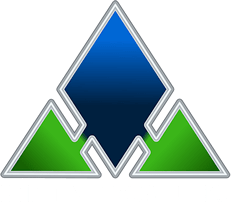Abstract. The vast majority of modern industries are inextricably linked to the use of water in their technology. The final product, as well as the smooth operation of the equipment, largely depends on its quality. Currently, special attention is paid not only to the parameters of the water when it is supplied to the process, but also to the economic feasibility of the applied water treatment methods. These requirements apply not only to clean water, but also to wastewater. The regulatory and legal framework of the Russian Federation places high demands on the quality of wastewater from industrial enterprises for discharge into fishery bodies and centralized sewers.
The effectiveness of the functioning of any developed production system depends on the structural principles laid down at the stage of its engineering. First, these principles are based on the functional tasks of its individual elements. In addition, it is necessary to take into account the materials, energy, labor, environmental and other characteristics and technological relationships between these elements. From this data, a range of equipment for water treatment has been created, which, along with the breadth of the range of customer requirements, provided the use of standard design solutions and the unification of structural and technological elements of systems.
Poultry farms are an example of enterprises with high water consumption. Their technological process includes the work of the slaughterhouse and the daily houses cleaning. The generated wastewater is complex in composition and poses a threat to the environment when discharged in its untreated form. The system of evaporator ponds existing in most poultry farms does not meet modern environmental requirements, and the introduction of new wastewater treatment methods is required.
The entire process of wastewater treatment after agricultural complexes can be divided into five traditional stages: wastewater treatment; physical and chemical cleaning; biological treatment; bringing to a normative indicator; collection and disposal of garbage and sludge.
At the first stage, the primary preparation of water takes place: the removal of large debris by hitting, collecting and separating the mass on drum sieves, then there is grinding of a smaller fraction (feather) with preliminary extraction on a separator. Subsequently, on sand traps, small heavy suspensions (sand) are removed from the liquid, and the process of sedimentation and accumulation of runoff in the tanks passes. This technology is standard; the equipment for it is selected based on the system performance.
At the second stage, the runoff enters the vortex layer apparatus (VLA), into which chemical agents (coagulants, flocculants, alkali) are pre-dosed. The device homogenizes the runoff, providing acceleration of physical and chemical reactions, and ensures the destruction of pathogenic microflora. Subsequently, the effluent enters the pressure flotation and is divided into previously purified water, foam and sludge. This technology is unique and allows you to use the resources rationally. During the flow treatment in the vortex layer apparatus, the costs of chemical reagents are significantly reduced. The levels of COD (chemical oxygen consumption) and BOD (biological oxygen consumption) are sharply reduced. That allows you to clean the runoff better in the next steps.
At the third stage, the runoff enters biotenes, in which it is purified due to the natural work of bacteria, organic impurities and biological contaminants. In the course of biotenes, the activated sludge is formed.
To bring the wastewater to norm, this water undergoes extra purification from color and turbidity by electroflotation. With a sufficient content of chlorine in the wastewater during the electrical treatment, sodium chlorine occurs, which contributes to the disinfection of the drain. At the final stage, final grinding takes place on the sand filtration unit and the ultraviolet sterilization module.
The final stage of work with wastewater involves the collection of generated waste during the treatment process. As a result water going through four stages we have: household waste, grease, sludge (including activated sludge), and purified water are formed. The disposal methods are: the removal of household garbage to landfills, the mandatory disposal of grease (due to impurities cannot be used in the process of further processing), the sludge is used as fertilizer and can be used for spreading to the fields, treated water is applicable for discharge into central sewers and water bodies for fishing purposes.
The presented practical solutions are based on the structuring of the source data using basic standard solutions and the maximum use of the unification of structural elements and technology. The decision-making is based on the created formalized model using the mathematical apparatus of cluster analysis, information support and software. The rational structural and functional framework makes it possible to ensure a significant reduction in time and material costs in the development and installation of systems, and also reduces the operating costs.

